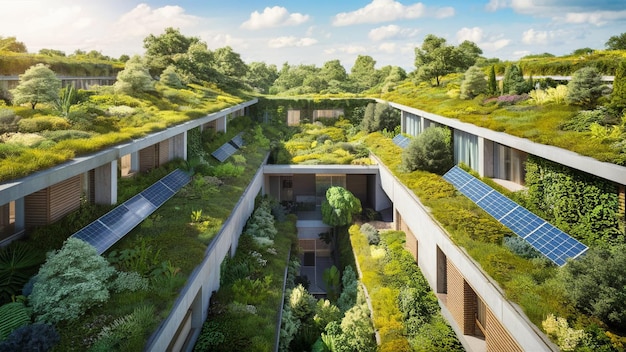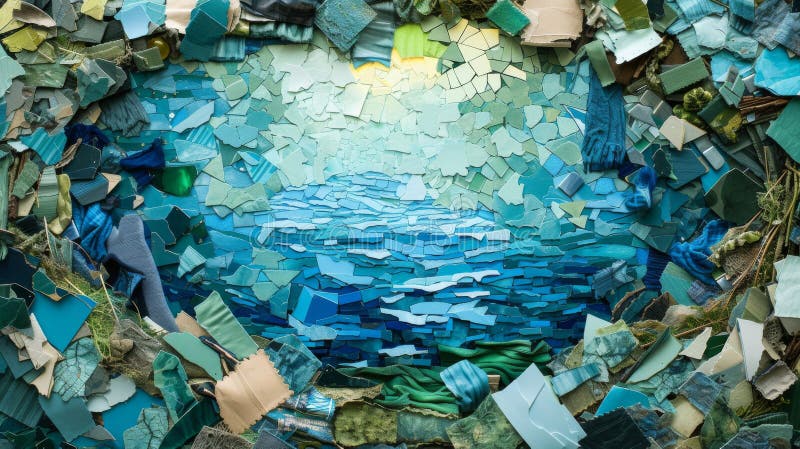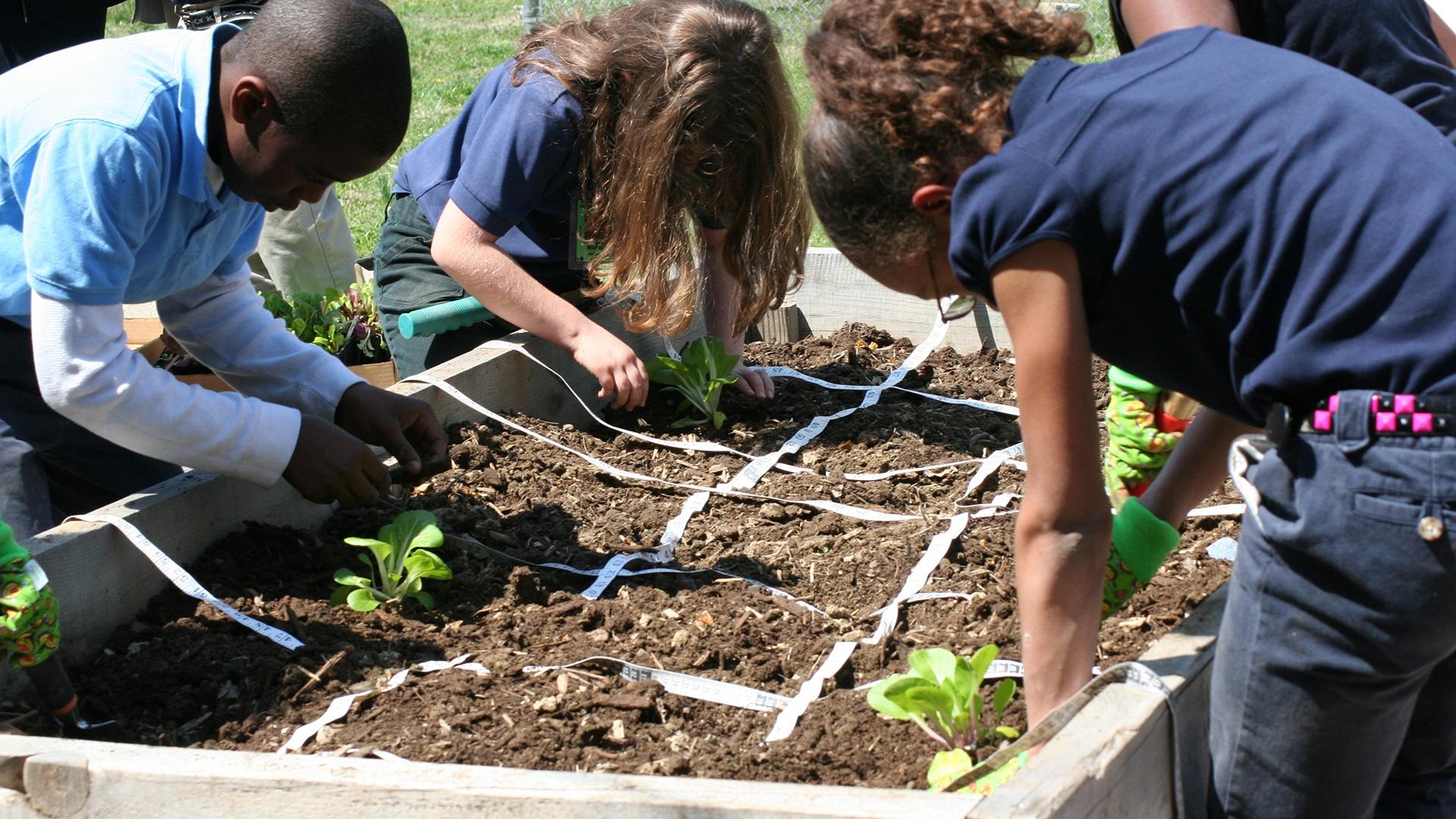
Elevating Urban Landscapes: A Comprehensive Guide to Sustainable Green Roof Systems
In the ever-evolving tapestry of urban development, a silent revolution is taking root – literally. Sustainable green roof systems, once a niche concept, are rapidly gaining traction as architects, city planners, and homeowners alike recognize their multifaceted benefits. More than just aesthetically pleasing additions to our cityscapes, these verdant havens offer a compelling blend of environmental, economic, and social advantages. This comprehensive guide delves into the intricacies of sustainable green roof systems, exploring their design, installation, benefits, and maintenance, providing you with the knowledge to understand and potentially implement this transformative technology.
What are Sustainable Green Roof Systems?
At its core, a green roof, also known as an eco-roof or vegetated roof, is a roof partially or completely covered with vegetation and a growing medium, planted over a waterproofing membrane. Unlike traditional roofs, which are typically composed of asphalt, concrete, or other non-vegetative materials, green roofs embrace the natural world, bringing a touch of nature to the often-stark environment of our buildings. These systems are designed to mimic natural ecosystems, providing a habitat for plants, and, in some cases, even small animals. The term “sustainable” signifies that these roofs are designed and maintained with environmental responsibility in mind, aiming to minimize their ecological footprint and maximize their positive impact.
Types of Green Roofs
Green roof systems come in various forms, each with its own characteristics and suitability for different applications. Understanding these types is crucial for selecting the right system for your specific needs:
- Extensive Green Roofs: These are the most common type, characterized by a shallow growing medium (typically 2-6 inches) and low-maintenance vegetation, such as sedum, mosses, and drought-tolerant plants. They are relatively lightweight and require minimal irrigation, making them suitable for a wide range of buildings.
- Intensive Green Roofs: Intensive roofs boast a deeper growing medium (6 inches or more), allowing for a wider variety of plants, including shrubs, trees, and even small gardens. They require more maintenance, including regular irrigation, fertilization, and pruning, but they offer greater aesthetic appeal and ecological benefits.
- Semi-Intensive Green Roofs: As the name suggests, these systems fall somewhere between extensive and intensive roofs, offering a balance of plant diversity and maintenance requirements.
- Modular Green Roofs: These systems utilize pre-vegetated modules or trays that are easily installed and replaced. They are a convenient option for retrofitting existing roofs and offer flexibility in design.
- Hybrid Green Roofs: These combine elements of different green roof types, such as integrating solar panels with a green roof to maximize space and energy efficiency.
The Environmental Benefits of Green Roofs
The environmental advantages of green roofs are extensive, making them a powerful tool in the fight against climate change and urban environmental degradation. These benefits extend beyond mere aesthetics, contributing to a healthier and more sustainable urban ecosystem:
Mitigating the Urban Heat Island Effect
Cities are often significantly warmer than surrounding rural areas, a phenomenon known as the urban heat island effect. This is primarily due to the prevalence of dark surfaces like asphalt and concrete, which absorb and re-radiate heat. Green roofs, with their vegetative cover, act as natural insulators, reflecting sunlight and absorbing heat through evapotranspiration (the process by which plants release water vapor). This helps to cool the surrounding environment, reducing energy consumption for cooling buildings and mitigating the negative health impacts of extreme heat.
Improving Air Quality
Plants on green roofs absorb pollutants from the air, such as particulate matter, nitrogen oxides, and sulfur dioxide, contributing to improved air quality. They also release oxygen through photosynthesis, further enhancing the air we breathe. In urban environments, where air pollution is often a significant health concern, green roofs offer a valuable solution for creating cleaner and healthier air.
Managing Stormwater Runoff
Green roofs effectively manage stormwater runoff by absorbing rainwater and releasing it slowly through evapotranspiration. This reduces the strain on municipal drainage systems, minimizing the risk of flooding and combined sewer overflows. By reducing runoff, green roofs also help to filter pollutants from the water, preventing them from entering rivers and streams.
Conserving Energy
Green roofs act as natural insulators, reducing the need for heating in the winter and cooling in the summer. This can lead to significant energy savings, reducing carbon emissions associated with building operations. The extent of energy savings depends on factors such as the roof’s design, the climate, and the type of vegetation used.
Enhancing Biodiversity
Green roofs provide habitats for birds, insects, and other wildlife, increasing biodiversity in urban areas. They can serve as stepping stones for wildlife corridors, connecting fragmented habitats and promoting ecological connectivity. By creating green spaces in otherwise barren environments, green roofs contribute to a more vibrant and resilient ecosystem.
The Economic Advantages of Green Roofs
Beyond their environmental benefits, green roofs offer a range of economic advantages, making them an attractive investment for building owners and developers:
Extending Roof Lifespan
Green roofs protect the underlying waterproofing membrane from the damaging effects of ultraviolet (UV) radiation, extreme temperatures, and physical damage. This can significantly extend the lifespan of the roof, reducing the need for costly repairs and replacements. Studies have shown that green roofs can double or even triple the lifespan of a traditional roof.
Reducing Energy Costs
As mentioned earlier, green roofs reduce energy consumption for heating and cooling, leading to lower utility bills. The energy savings can be substantial, particularly in regions with extreme temperatures. Over time, these savings can offset the initial investment in the green roof system.
Increasing Property Value
Green roofs can enhance the aesthetic appeal of a building, making it more attractive to potential buyers or renters. They can also increase the property’s value, reflecting the environmental and economic benefits they provide. In some areas, green roofs are eligible for tax credits, rebates, and other financial incentives, further enhancing their economic viability.
Creating Job Opportunities
The green roof industry is creating new job opportunities in design, installation, maintenance, and research. This contributes to economic growth and supports the development of a green economy.
Design and Installation Considerations
Successfully implementing a sustainable green roof system requires careful planning and execution. Several factors must be considered during the design and installation phases:
Structural Assessment
Before installing a green roof, it is essential to assess the structural capacity of the building to ensure it can support the added weight of the system, including the growing medium, vegetation, and water. A structural engineer should be consulted to conduct a thorough assessment and determine the appropriate load-bearing capacity.
Waterproofing Membrane
A high-quality waterproofing membrane is crucial to prevent water leaks and protect the building from moisture damage. The membrane should be durable, root-resistant, and compatible with the other components of the green roof system. EPDM rubber, modified bitumen, and PVC are commonly used materials.
Drainage Layer
A drainage layer is essential to remove excess water from the growing medium and prevent waterlogging, which can damage the plants and the roof structure. This layer typically consists of a drainage mat or a layer of gravel.
Growing Medium
The growing medium, or substrate, provides a suitable environment for plant growth. It should be lightweight, well-draining, and able to retain moisture. A mixture of compost, mineral aggregates, and other organic materials is commonly used.
Vegetation Selection
The choice of vegetation depends on the type of green roof, the climate, and the desired aesthetic. Drought-tolerant plants, such as sedum, are well-suited for extensive roofs, while a wider variety of plants can be used on intensive roofs. Native plants are often preferred as they are adapted to the local climate and require less maintenance.
Irrigation System (If Applicable)
Intensive green roofs and some semi-intensive roofs require an irrigation system to provide water to the plants. The system should be designed to deliver water efficiently and effectively, minimizing water waste. Drip irrigation is often preferred as it delivers water directly to the roots of the plants.
Installation Expertise
It is crucial to hire experienced professionals to design and install the green roof system. They will have the knowledge and expertise to ensure the system is properly installed, meets all relevant building codes, and functions effectively.
Maintenance and Upkeep
Regular maintenance is essential to ensure the long-term health and performance of a green roof system. The specific maintenance requirements will vary depending on the type of green roof and the vegetation used:
Watering
Irrigation is essential, especially during dry periods. The frequency and duration of watering will depend on the plant species, the climate, and the growing medium. Overwatering should be avoided as it can lead to root rot.
Fertilization
Fertilization may be required to provide the plants with the nutrients they need to thrive. The type and frequency of fertilization will depend on the plant species and the growing medium. Slow-release fertilizers are often preferred.
Weeding
Weeds should be removed regularly to prevent them from competing with the desired vegetation. Hand-weeding is often the most effective method, but herbicides can be used with caution.
Pruning
Pruning may be necessary to maintain the shape and size of the plants, remove dead or diseased growth, and prevent plants from becoming overgrown. The frequency and type of pruning will depend on the plant species.
Inspections
Regular inspections are essential to identify and address any potential problems, such as leaks, drainage issues, or plant diseases. The roof should be inspected at least twice a year, and more frequently if necessary.
Case Studies and Examples
Real-world examples showcase the transformative power of green roofs. Here are a few notable case studies:
The Vancouver Convention Centre, Canada
This iconic building boasts one of the largest green roofs in North America, covering over six acres. The roof provides habitat for local wildlife, reduces stormwater runoff, and improves air quality. It has become a symbol of Vancouver’s commitment to sustainability.
The California Academy of Sciences, San Francisco, USA
The Academy’s living roof is a stunning example of an intensive green roof. It features a diverse array of plants, provides habitat for native species, and helps to regulate the building’s temperature. The roof is also used for research and educational purposes.
Bullitt Center, Seattle, USA
This innovative office building is designed to be one of the most sustainable buildings in the world. Its green roof helps to manage stormwater runoff, reduce energy consumption, and provide a pleasant outdoor space for employees.
The Future of Green Roofs
The future of green roofs is bright. As cities become increasingly aware of the environmental and economic benefits of these systems, their adoption is expected to continue to grow. Technological advancements, such as the development of new materials and planting techniques, will further enhance their performance and affordability. Government incentives and building codes are also playing a significant role in promoting the use of green roofs.
Here are some emerging trends in the green roof industry:
- Integration with Renewable Energy: Combining green roofs with solar panels to maximize energy efficiency and reduce the building’s carbon footprint.
- Modular and Pre-Vegetated Systems: Simplifying installation and reducing costs.
- Smart Green Roofs: Utilizing sensors and data analytics to optimize irrigation, fertilization, and maintenance.
- Vertical Green Walls: Expanding the concept of green infrastructure to building facades.
Conclusion: Embracing a Greener Future
Sustainable green roof systems offer a compelling solution for creating more sustainable, resilient, and livable cities. They provide a wide range of environmental, economic, and social benefits, making them a valuable investment for building owners, developers, and communities. By embracing this technology, we can transform our urban landscapes into vibrant, green ecosystems that contribute to a healthier planet and a better quality of life for all. The journey toward a greener future starts with the rooftops above us. Let’s cultivate a world where buildings breathe, where nature thrives, and where our cities become havens of sustainability.


